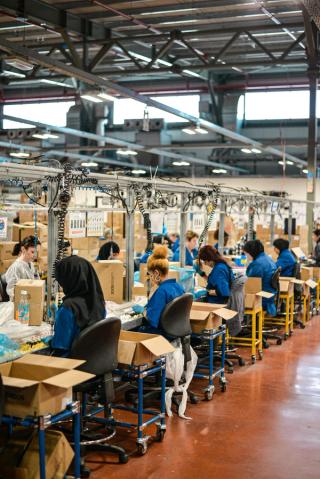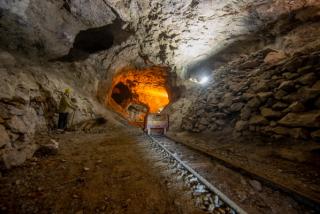Introduction
As the world accelerates toward a renewable energy future, wind energy facilities are increasingly being developed on land shaped by past and present mining. A recent wind energy study, navigating sedimentary layers, dolerite intrusions, and a legacy of coal and gold mining, delivered a stark reminder: Our clean energy ambitions are only as strong as the ground they stand on.
The geotechnical study highlights the intricacies of developing wind energy infrastructure in regions rich in geological resources, with previous and currently active mining, which is an increasingly common scenario in many parts of the world, least of all South Africa. Here are some key takeaways that extend beyond this specific case study and speak to the broader challenges and opportunities in the sector.
The Geotechnical Puzzle
- Mining's Lingering Impact: Past and present mining activity introduces an additional layer of complexity. Undermining and high-extraction mining methods have left a landscape susceptible to subsidence, voids, and variable ground stability; factors that must be carefully assessed before any development proceeds. However, fragmented records and limited access to data emphasize the need for a “diplomacy of data”; collaboration with landowners, mining companies, and regulators to build a comprehensive geotechnical picture. Leveraging geological and geotechnical data to understand the subsurface conditions and the potential of undermining cannot be overlooked in the absence of historic mining records.
- Variability is the Constant: A mix of sandstones, mudrocks, and coal seams interspersed with dolerite dykes presents a classic case of variability. Competent bedrock meets "problem soils." Each layer demands a tailored solution, from robust foundations to careful earthworks to support turbines and blades towering 300m high, subjected to complex dynamic loads.
- The Seismic Factor: Natural tectonics combined with mining-induced tremors create an added risk. This underscores the importance of refined geotechnical risk assessments and structural designs that account for ground movement and stability.
From Vision to Validation
- Data-Driven Design: Early geotechnical studies are the playbook. From conceptual to detailed studies, a comprehensive geotechnical investigation is non-negotiable. Borehole drilling and SPT, CPT, geophysical surveys, and laboratory testing are not just procedures; they're the tools we use to piece together the geological and geotechnical picture of the ground beneath and to identify subsurface anomalies.
- Tailored Foundations: Foundation selection, either shallow gravity foundations or deep piled foundations, depends on a good understanding of the site's unique strata, environmental factors, and structural loads. One size does not fit all.
- Anticipate, Adapt, Advance: Excavation and seepage challenges, material reuse and sourcing, seismic considerations, are not just afterthoughts. They're integral to the earthworks planning process, ensuring designs evolve with evidence and hence minimizing surprises during construction.
- Undermined Ground: In undermined areas, a multi-faceted approach is required, including detailed investigations, subsidence determination, and risk assessment. Avoidance is ideal, but where that’s impractical, engineered solutions such as deep-piled foundations, reinforced concrete rafts, and ground improvement techniques (e.g., compaction grouting, deep soil mixing) become essential. Real-time monitoring further enhances safety by detecting early signs of ground movement.
Collaboration & Foresight
Perhaps the most critical takeaway is the power of collaboration. Successful wind energy development in geologically complex regions or undermined ground requires navigating a network of stakeholders, from The Council for Geoscience, regulatory bodies, mining operators, and landowners to build a comprehensive geotechnical understanding.
The Way Forward
The transition to renewable energy is not just about installing turbines; it’s about ensuring they stand firm for decades. Geotechnical engineering plays a pivotal role in bridging the gap between ambitious energy targets and the realities of ground conditions. As more sites with complex mining histories are considered for wind energy projects, the industry must prioritize geotechnical due diligence as a cornerstone of sustainable development.




